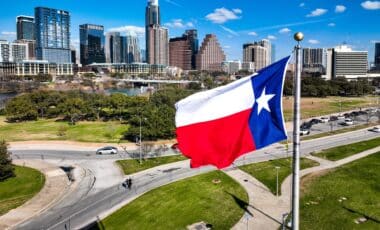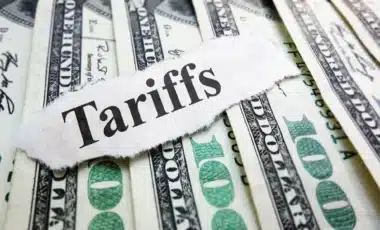In the most recent quarter, the U.S. economy encountered an unforeseen deceleration, surpassing predictions and fostering optimism about steering clear of a recession. Despite the slowdown, the performance outstripped forecasters’ expectations.
U.S. GDP Growth and Soft Landing Prospects
The U.S. Commerce Department reposts a 3.3% annual growth in gross domestic product, adjusted for inflation, during the last quarter of the previous year. Although growth slowed from the preceding quarter, it surpassed economist expectations by over a percentage point.
Core price increases, excluding volatile food and energy costs, rose by 1.9%, aligning with the Federal Reserve’s targeted inflation rate. This data fosters optimism that the U.S. might achieve a “soft landing“, where price increases normalize and economic growth persists, thus averting an economic downturn.
“Soft landing: runway acquired,” remarked Jamie Cox, managing partner at Virginia-based financial advisory firm Harris Financial Group, as the growth in the final quarter of the year was largely driven by a surge in consumer spending, constituting about two-thirds of U.S. economic activity, as indicated by the data.
Additionally, businesses demonstrated increased confidence in return prospects by expanding spending on inventory, according to the findings.
Furthermore, the data revealed that economic expansion was supported by contributions from the state and local government spending, with a focus on infrastructure expenditures.
Describing the situation, Mark Zandi, chief economist at Moody’s Analytics, commented, “Strong growth and low inflation — feels very good.”
President Joe Biden acknowledged the positive economic news, highlighting its significance as “good news for American families and American workers.”
The GDP data, considered a key gauge of a nation’s economic well-being, aligns with a series of positive signs. Just this week, the Dow Jone Industrial Average achieved a historic close above 38,000 and the S&P 500 set a new record high. Both indices saw incremental gains in early Thursday trading, reacting to the positive implications of the GDP data.
Understanding Consumer Confidence, Inflation, and the Fed’s Decisions
A job report earlier this month reflected strong hiring in December, surpassing expectations. Despite robust economic indicators, consumer surveys initially showed frustration, contrasting with the data. However, a recent University of Michigan survey revealed a significant 13% surge in confidence for January, marking its highest level since July 2021.
Lydia Boussour from consulting firm EY characterized the unexpectedly positive economic performance as “The recession that wasn’t”. Despite this, Boussour notes a 35% chance of a recession, anticipating economic slowing and acknowledging inflation remaining above the Fed’s target rate, albeit lower than its peak of 9% last year.
The Federal Reserve anticipates its stance on inflation later this year through interest rate cuts, but the timing remains uncertain. Such cuts could reduce borrowing costs, potentially stimulating economic activity with increased household spending and corporate investment.
However, the Fed faces the risk of inflation resurgence if rates are lowered too swiftly, as heightened consumer demand may accelerate price increases.
The unexpectedly robust growth reported on Thursday may allow the Fed to postpone rate cuts, as the economy shows resilience despite the central bank’s downward pressure, explained Boussour. She stated, “The recent string of positive economic surprises means the Federal Reserve will be in no rush to cut interest rates,” projecting that the first cut may take place in May.









